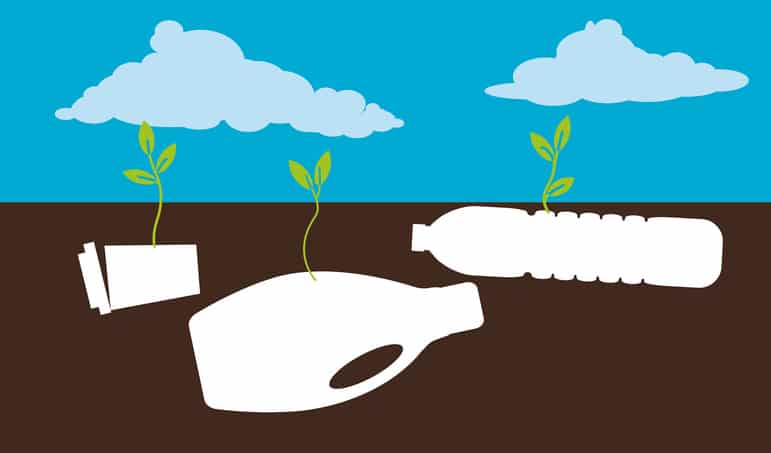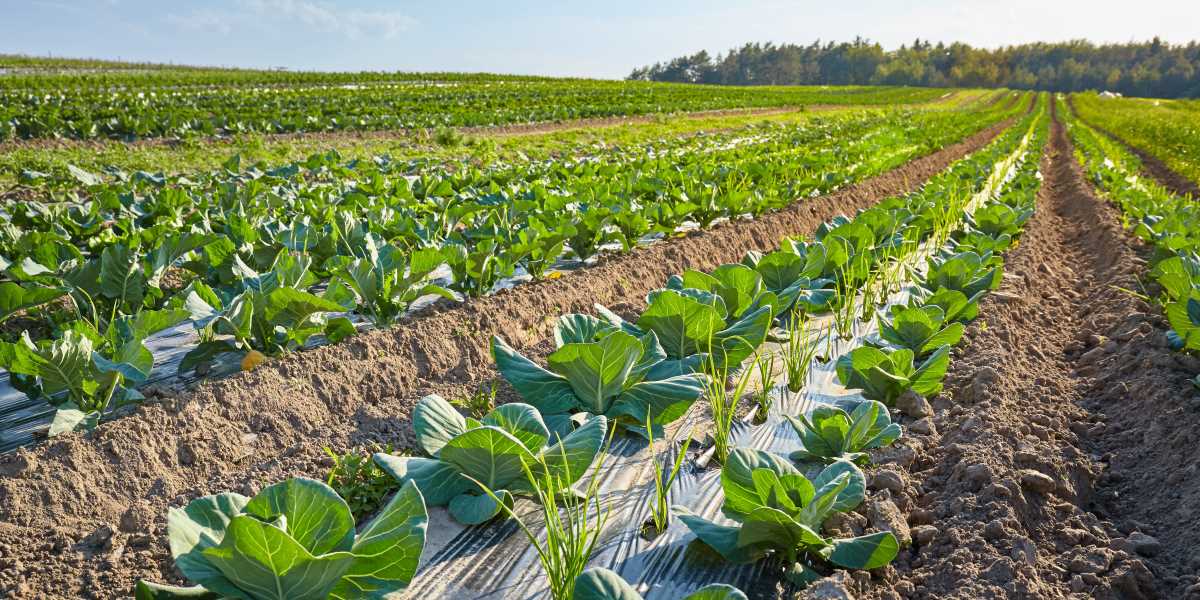In the classic film “The Graduate” a family friend corrals young Benjamin, who had just graduated from college, and whispers into his ear: “Plastics.” The year was 1967 and plastics were the “miracle materials” that changed lives. Virtually every industry from airplane and car manufacturers to hospital equipment and cookware suppliers benefitted from plastics. Women flocked to Tupperware parties and vinyl records were the rage. My, how times have changed! Plastics have become a pariah, pollutants that are sullying and endangering the environment. If Benjamin were embarking on a career today, the whispered word would likely be “bioplastics,” with further qualifiers such as “degradable,” “biodegradable,” “oxo-degradable” “recyclable” or “compostable.”
These terms have infiltrated advertising as the plastics industry attempts to cope with the negative image of beaches defiled with plastic bottles, garbage patches in the ocean, shopping bags in gutters and straws up turtles’ noses. Indeed, items made from the most common plastics, such as polyethylene (PE), polypropylene (PP), polyethylene terephthalate (PETE) and polyvinyl chloride (PVC) are extremely durable and can stay around in the environment for decades and decades.
Most plastics are made from natural gas or petroleum, which is another concern since these are non-renewable resources. So, we have a dual challenge. Find ways to cut down on the amount of plastic that gets discarded and find renewable resources that can be converted into “bioplastics.”
Bioplastics are produced partly or wholly from living species such as plants or microbes rather than from fossil fuels. An example would be polylactic acid (PLA), made from lactic acid, which in turn is produced by the action of lactic acid bacteria on starch from corn, cassava, sugarcane or sugar beets. PLA is deemed to be a “green” plastic because it is made from a renewable resource. It can be used to make transparent drinking cups, disposable tableware and teabags.
However, bioplastics are not necessarily biodegradable. That term refers to substances that can be broken down by microbes normally found in the environment. Food scraps, human and animal waste, paper, wool and fallen leaves are biodegradable but the speed at which this happens depends on the conditions. A cup made of PLA will biodegrade quite quickly if buried in soil but will not break down in a landfill. It is, however “compostable,” which is why it is used to make compost bags. Note, though, that “compostable” does not mean that the plastic will break down in the compost heap in your back yard. “Compostable” on a label means that in a proper composting facility where temperature and pressure are strictly controlled, it will decompose into carbon dioxide, water and a complex mixture of organic compounds such as cellulose, hemicellulose and lignin, referred to as biomass. This will not happen in a landfill.
Furthermore, some bioplastics may not be biodegradable or compostable at all. For example, polyethylene can be made from ethylene that is made from ethanol that in turn is produced by fermentation of corn or sugar cane. This polyethylene is identical to the polyethylene made from ethylene derived from natural gas or petroleum and is not biodegradable or compostable but could still be advertised as a “bioplastic” or as “renewable polyethylene.” Does it have any advantage over regular polyethylene? Maybe. When the corn or sugar cane is growing, it uses up carbon dioxide from the air through photosynthesis. On the other hand, the land dedicated to the crops requires deforestation and the use of fertilizer and pesticides.
While polyethylene is not biodegradable, it is recyclable. But you have to remember that recyclable does not necessarily mean recycled. Unfortunately, much of the plastic that goes into the recycling bin ends up in landfills or incinerators. Separation of plastics is the big problem for the recycling industry. Biodegradable and compostable plastics are difficult to separate from other plastics and can contaminate the recycling stream and should not be put in the recycling bin.
The term “degradable” on a label is misleading. It just means that in some unspecified time, when exposed to the elements, it will break down into smaller pieces. A plastic bag can be said to be degradable because if it happens to end up in the ocean it will eventually break down into smaller pieces, but those smaller pieces of plastic can be a problem. “Oxo-degradable” means that metallic catalysts have been added to the plastic to cause a more rapid degradation when exposed to heat or light, but the breakdown products may not be biodegradable, so this is not of great advantage.
There is no simple solution to the plastic waste problem. But we can cut down on use, although that is not easy. I have been reusing a shopping bag for a year and remember that it is possible to drink a soft drink without a straw. So, forget the straw. Better yet, forget the soft drink.











